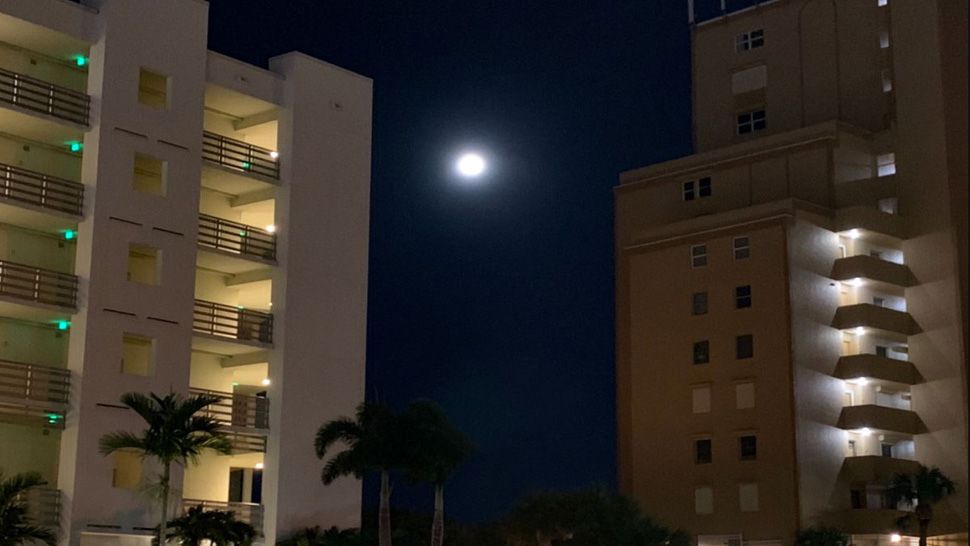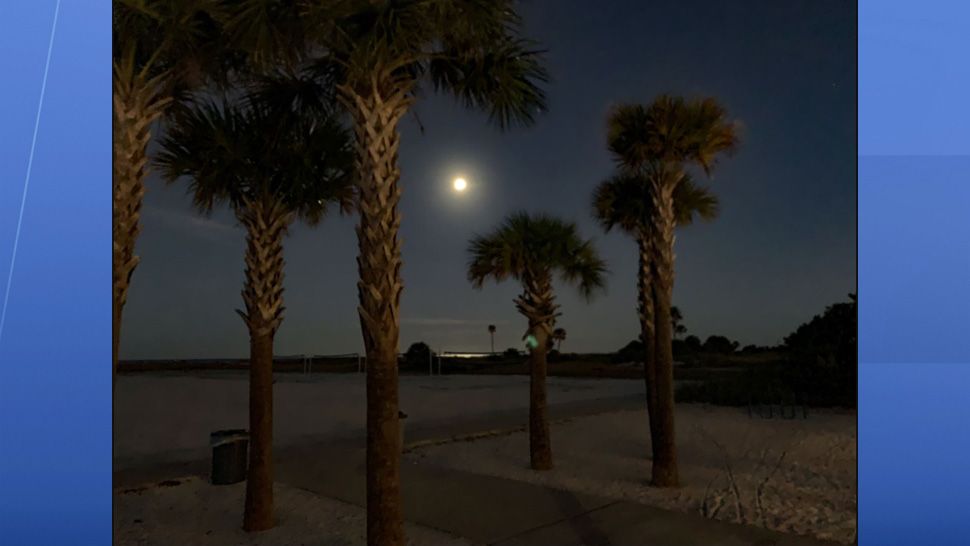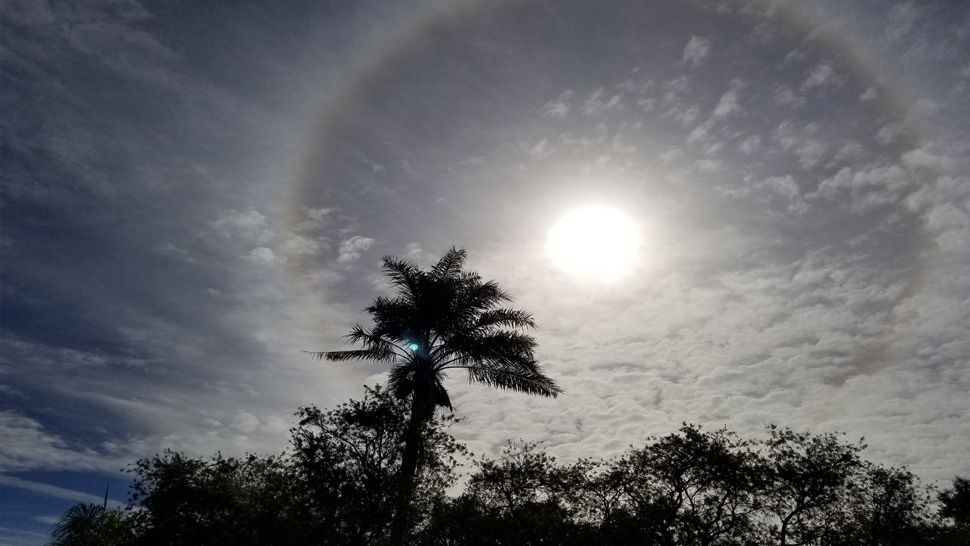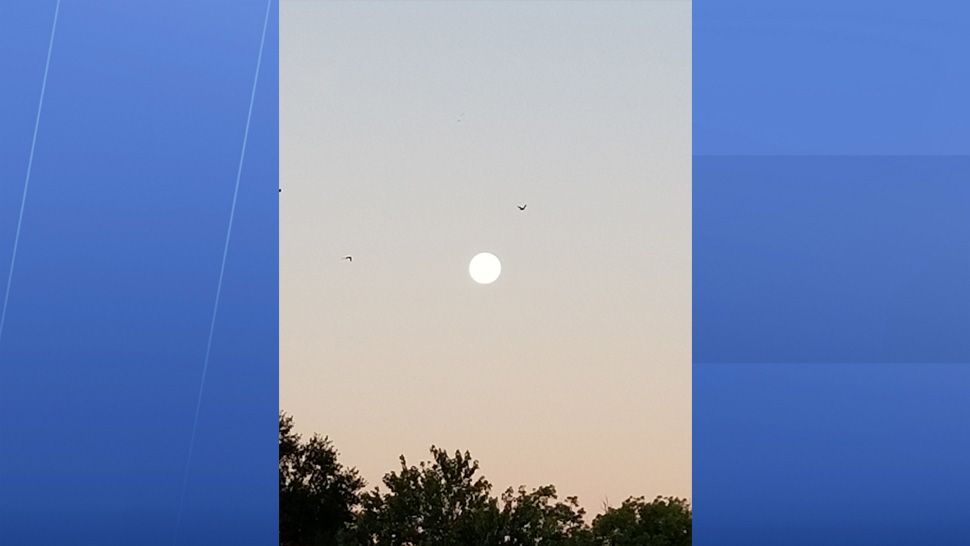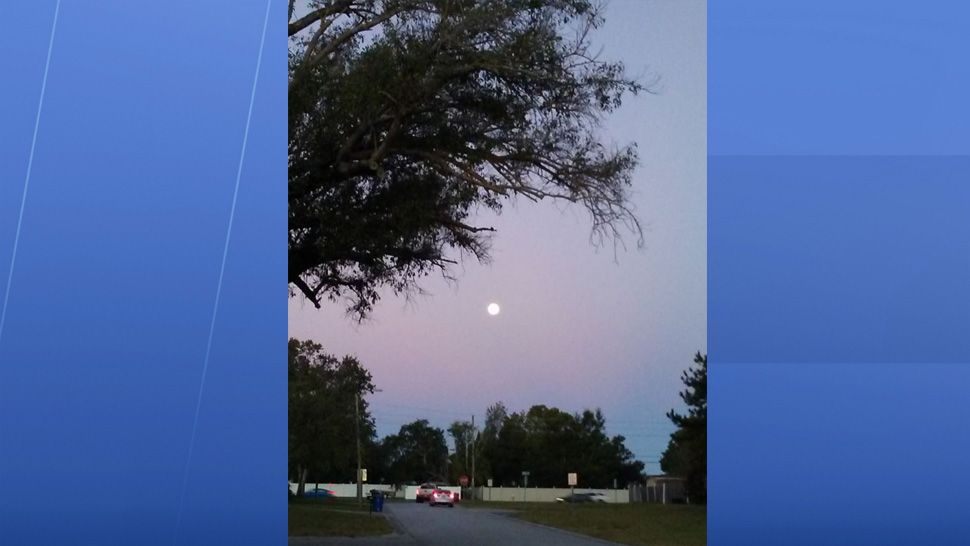ST. PETERSBURG, Fla. — Occurring approximately every 29.5 days, the full moon has always been associated with a number of myths, legends, eerie stories, and superstitions — including make people do crazy things. But does the moon really affect human behavior?
Despite a vast majority of studies by scientists, astronomers, and other scholars, finding no connections between the full moon and human behavior, the phrase “it must be a full moon” is still frequently used when some unusual things happen.
Here are five examples, and some info about whether or not there's any merit to the myth:
THE MOON MAKES PEOPLE CRAZY
People used to believe that the full moon could cause insanity, and even more famously, lycantrophy. One of the most popular superstitions was that a man or woman could turn into a werewolf if he or she, on a certain Wednesday or Friday, slept outside on a summer night with the full moon shining directly on his or her face. This is maybe the most popular myth surrounding the full moon, and it goes back a long way. In fact, the word "lunatic" even comes from a Latin root indicating the moon. However, researchers today can't find any evidence that people are more prone to mental health problems on the full moon than at any other time of month. And, in fact, there are some studies that find that mental health issues might be worst around the new moon and least troubled around the full moon.
THE FULL MOON INTERFERES WITH SLEEP
The full moon is often associated with temporal insomnia. This is one of the things that researchers think might actually be true. In the past, the reason was obvious; people did not sleep well during the full moon due to the bright light it emitted. With all the artificial lights around us in this day in age, you'd think the full moon's light wouldn't affect us. However, sleep studies have found that people are more agitated when sleeping around the full moon, even when they don't know what phase the moon is in. Maybe the extra light from the full moon still has an impact on our sleep or maybe the full moon has an impact on our subconscious — who knows? Just make sure you don't sleep outside on those full moon nights.
PEOPLE ARE MORE AGGRESSIVE ON THE FULL MOON
This myth doesn't seem to be quite as grounded in reality, though there have been some studies that suggest people might be more violent on the full moon. For instance, one major study in the 1970s found that there was an increase in reported aggravated assaults around the full moon; another found crime in general was more common on the full moon. However, other research suggests that there isn't any correlation between the moon phase and violence.
THE MOON AFFECTS ANIMALS
There are all sorts of stories of animals behaving strangely around the full moon, but it might actually be humans who act differently regarding our pets. A study carried out by the Bradford Royal Infirmary (a teaching hospital in the UK) found that dog bites are up to twice as common during a full moon than on other nights. However, researches think it might not be that the moon makes animals act aggressively, but rather that people are more likely to take advantage of the extra light and take their animals out, increasing the odds that some of those animals will injure someone.
THE FULL MOON MAKES PEOPLE TAKE RISKS
Stories would have you believe that people are more impulsive and less rational around the full moon, but analyzing things like emergency room admissions doesn't bear out that hypothesis. After all, if people are taking more risks, you'd expect them to be injured more often. But it seems the moon doesn't have the hold on our impulsive tendencies that we like to think.
Here are some facts surrounding the full moon:
* As the full moon occurs every 29.5 days, February is the only month that can occur without a full moon. All of the other months are guaranteed to witness at least one full moon.
* The full moon is often thought of as an event of a full night's duration, but this is misleading because the Moon seen from Earth is continuously becoming larger or smaller (though much too slowly to notice with the naked eye). Its absolute maximum size occurs at the moment when the expansion has stopped.
* When the full moon coincides with the Moon´s closest approach to Earth on its elliptical orbit, a rare phenomenon known as the supermoon occurs. The most recent occurrence of this phenomenon was on September 27–28, 2015, while the next time will be in 2033.
* The full moon is considered unlucky if it occurs on Sunday but lucky if it occurs on Monday. In fact, the name of Monday is derived from Old English “Mōnandæg” and Middle English “Monenday,” which mean "moon day."
* The full moon is the brightest object in the night sky. It has an apparent magnitude (measure of a space object´s brightness as seen by an observer on Earth) of -12.74 compared with the Sun's of -26.74.
* When there happen to be two full moons within one calendar month, the second one is called the blue moon. This phenomenon occurs once every 3 years on average.
* When the full moon coincides with a total lunar eclipse, it appears red. In this phenomenon known as the red moon, the only light seen is refracted through the earth's shadow. This light looks red for the same reason that the sunset looks red, due to Rayleigh scattering of the more blue light.



